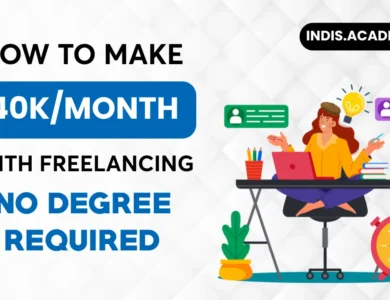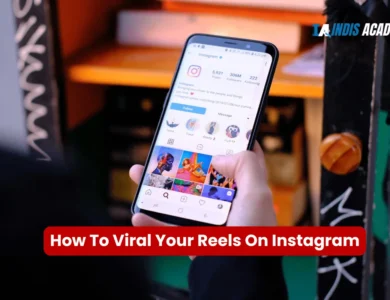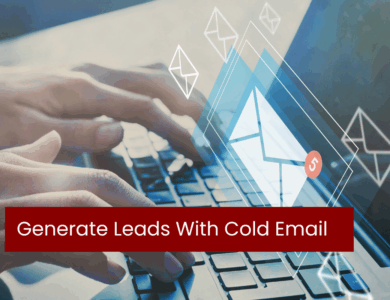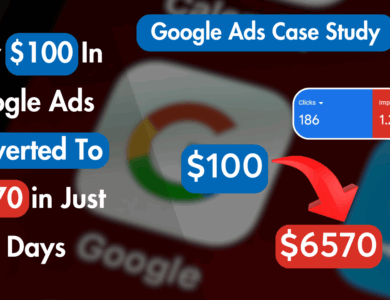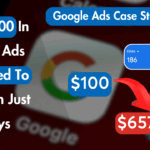What Is Performance Marketing – Complete Overview & How To Learn In 2025
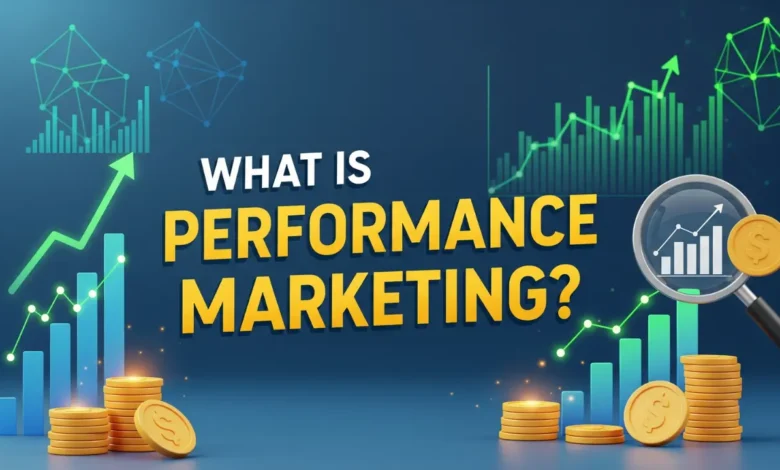
In today’s digital-first world, businesses are no longer satisfied with just “spending on ads.” They want clear, measurable results-and that’s exactly where performance marketing comes in.
Unlike traditional marketing, which often focuses on brand awareness or reach, performance marketing is all about paying only when a specific action is achieved-whether that’s a click, a lead, a sale, or an app download.
In 2025, the demand for skilled performance marketers has skyrocketed. From startups trying to stretch their limited ad budgets to global brands running large-scale campaigns, everyone is shifting towards ROI-driven marketing strategies.
The reason is simple: every rupee or dollar spent can be tracked, analyzed, and optimized in real time.
What makes performance marketing even more powerful today is the role of AI and automation.
Platforms like Google Ads, Meta Ads, and programmatic networks are using machine learning to help advertisers reach the right audience with laser precision. For businesses, this means higher returns; for learners and professionals, this means huge career opportunities.
This blog will give you a complete overview of performance marketing, its key components, benefits, future trends, and a step-by-step guide to learning it in 2025-so you stay ahead in the digital game.
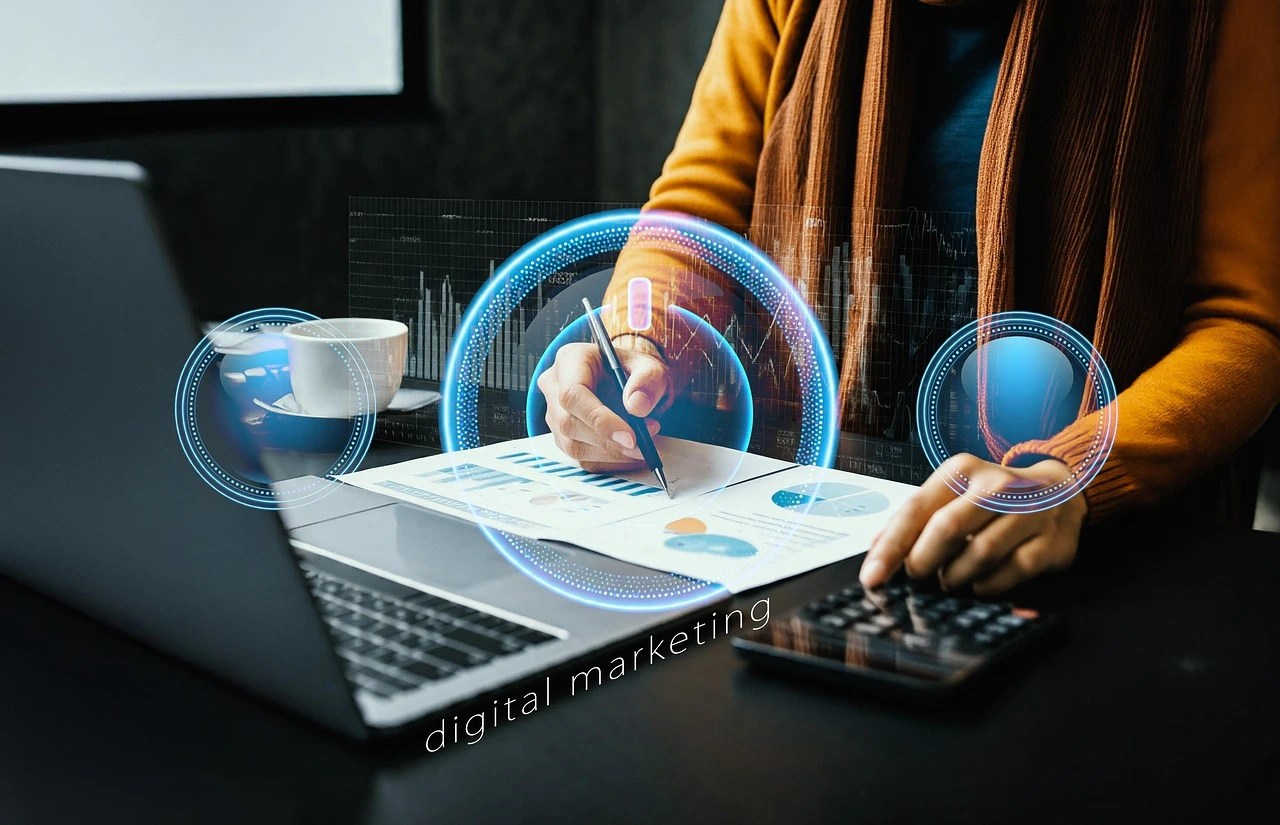
Learn AI & Digital Marketing,
Pay Fees After Placement
- ✅ Minimal Admission Fees
- ✅ No Loan or Income Sharing Agreement
- ✅ 100% Placement Support
- ✅ ISO & Govt Registered Certificate
- ✅ Practical 3+1 Months Duration
Get a free counseling call. We’ll guide you through learning, certification, and job placement.
Request a Free Call Back
Takes less than a minute.
What Is Performance Marketing?
At its core, performance marketing is a digital advertising strategy where brands pay only when a specific action is completed. Unlike traditional marketing-where you might spend millions on TV or print ads without knowing exactly how many people bought your product-performance marketing ensures that you invest money only when measurable results are delivered.
Simple Definition
Performance marketing means advertisers pay publishers or ad platforms when users take actions such as:
- Clicking on an ad
- Filling out a form
- Subscribing to a newsletter
- Purchasing a product
- Downloading an app
This “pay-for-results” model makes performance marketing one of the most cost-effective and transparent forms of marketing in today’s digital era.
How It Differs from Traditional Marketing
Traditional marketing focuses heavily on brand visibility and awareness. For example, a company may run a billboard campaign and hope people notice it.
However, it’s difficult to measure the exact ROI. Performance marketing, on the other hand, is data-driven. Every click, impression, or conversion is tracked using advanced tools, so advertisers know exactly what they are paying for.
In 2025, this difference is even sharper. Businesses are moving away from “spray and pray” marketing tactics and leaning towards campaigns where they can measure cost per click (CPC), cost per acquisition (CPA), or return on ad spend (ROAS) in real time.
Key Players in Performance Marketing
Performance marketing is a collaborative ecosystem involving:
- Advertisers (Brands/Businesses): The ones who want to promote products or services.
- Publishers (Affiliates/Platforms): Channels like blogs, influencers, ad networks, or social media platforms that display ads.
- Ad Networks/Platforms: Google Ads, Meta Ads, Taboola, Outbrain, etc., that connect advertisers and publishers.
- Consumers: The target audience who interacts with the ads.
- Tracking & Analytics Tools: Software like Voluum, Funnel.io, or Google Analytics to measure performance.
Real-World Examples
- E-commerce brand on Facebook Ads: A shoe company runs a campaign and pays only when someone clicks “Shop Now” and purchases.
- Affiliate Marketing: A blogger reviews a gadget and earns a commission only when readers buy through their affiliate link.
- App Install Campaigns: A fintech startup pays Google Ads only when users download and install their app.
Why It’s Popular in 2025
With tighter budgets and increased competition, businesses can no longer afford to waste money on ads that don’t convert.
The rise of AI-powered ad optimization, precise targeting, and real-time analytics has made performance marketing the backbone of digital marketing strategies.
It allows startups, freelancers, and large enterprises alike to maximize ROI while minimizing risks.
In simple words, performance marketing is about paying for what works-making it a win-win for both advertisers and publishers.
Core Components of Performance Marketing
Performance marketing is not a single channel-it’s an umbrella strategy that combines multiple online advertising methods where businesses pay for specific, measurable outcomes.
To fully understand it, let’s explore the key components that make performance marketing work in 2025.
1. Affiliate Marketing
Affiliate marketing is one of the oldest and most popular forms of performance marketing. Here, businesses partner with affiliates (publishers, bloggers, influencers, or websites) who promote their products or services. Affiliates earn a commission only when they generate sales, leads, or conversions.
Example: A travel blogger promotes a hotel booking platform and earns a percentage for every confirmed booking made through their affiliate link.
Why it works in 2025: With AI-powered recommendation engines and influencer trust, affiliate marketing has become highly effective, especially in e-commerce, travel, and SaaS industries.
2. Search Engine Marketing (SEM / PPC)
Search engines like Google and Bing allow businesses to run Pay-Per-Click (PPC) campaigns, where they bid on specific keywords. Advertisers pay only when users click on their ad.
Example: A coaching institute bidding for “best digital marketing course 2025” on Google Ads. They only pay when someone clicks and visits their landing page.
Why it works in 2025: With voice search and AI-driven ad placements, SEM campaigns are more accurate than ever, ensuring businesses reach people with high purchase intent.
3. Social Media Advertising
Social media platforms-Facebook, Instagram, LinkedIn, TikTok, and Twitter (X)-are now the heart of performance marketing. Advertisers can target users based on demographics, interests, behaviors, and even life events.
Example: A fitness app runs Instagram ads targeting 20–35-year-olds interested in “workouts” and pays only when users download the app.
Why it works in 2025: AI algorithms on Meta Ads and LinkedIn Ads automatically optimize campaigns, ensuring businesses get the best ROI from limited budgets.
4. Native Advertising
Native ads are promotional content that blends naturally with a platform’s design, making them less disruptive and more engaging. Platforms like Taboola, Outbrain, and Google Discovery Ads are widely used for native ads.
Example: An article titled “10 Best Laptops for Students in 2025” with embedded affiliate links to e-commerce sites.
Why it works in 2025: Users are more ad-aware today. Native advertising feels natural, making it a high-conversion channel for brands.
5. Influencer Marketing (Performance-Based)
Earlier, influencer marketing meant paying influencers upfront. But in 2025, many brands prefer performance-based influencer deals-influencers get paid only for conversions, not just for posting.
Example: A YouTube tech creator promotes a new smartphone and earns a commission only for actual purchases tracked via unique codes or affiliate links.
Why it works in 2025: Micro-influencers with small but highly engaged audiences deliver excellent ROI, especially in niches like beauty, fitness, and tech.
6. Programmatic Advertising
Programmatic advertising uses AI-driven software to automate ad buying. Instead of negotiating manually, ads are bought and placed in real time through automated platforms.
Example: A SaaS brand uses programmatic ads to target decision-makers on business websites worldwide, paying only when leads are captured.
Why it works in 2025: Programmatic ads ensure precision targeting across multiple platforms at scale, making them ideal for global campaigns.
7. Mobile & App Marketing
With over 6 billion smartphone users worldwide, mobile marketing is a key part of performance marketing. Advertisers run app install campaigns, in-app ads, and SMS-based promotions.
Example: A food delivery app runs Google UAC (Universal App Campaigns) and pays only for successful app installs or first orders.
Why it works in 2025: Mobile-first strategies dominate because users spend most of their time on apps rather than websites.
8. Email & Retargeting Campaigns
Email marketing and retargeting are often overlooked but remain crucial. Brands use automated email funnels and remarketing ads to bring back users who showed interest but didn’t convert.
Example: An e-commerce site retargets users who abandoned their carts, paying only if the user completes the purchase.
Why it works in 2025: With AI personalization, retargeting campaigns deliver higher conversion rates than cold ads.
Performance Marketing Funnel (How It Works)
Performance marketing isn’t just about running ads-it follows a funnel structure, where potential customers move through different stages before converting. Understanding this funnel is crucial because it allows marketers to optimize every step, reduce wasted spend, and improve ROI.
Let’s break down the performance marketing funnel in 2025 step by step.
1. Awareness (Top of the Funnel – TOFU)
This is where your target audience first discovers your brand or product. The goal here isn’t immediate sales, but to make people aware of your existence.
- Channels used: Social media ads, native advertising, influencer collaborations, display ads.
- Metrics to track: Impressions, reach, engagement.
- Example: A fintech startup runs Instagram reels introducing their new savings app, ensuring people know the brand exists.
Pro Tip (2025): AI-driven audience targeting helps brands reach users with the highest probability of interest, making awareness campaigns more cost-efficient.
2. Consideration (Middle of the Funnel – MOFU)
Once people know about you, the next step is to nurture their interest. Here, you aim to show why your product is better than competitors and build trust.
- Channels used: Retargeting ads, email marketing, comparison content, webinars.
- Metrics to track: Click-through rate (CTR), video watch time, bounce rate.
- Example: An online course provider runs Google Ads retargeting campaigns for people who visited their landing page but didn’t enroll. They show testimonials and free demo class offers.
Pro Tip (2025): Personalized ads powered by AI can show different content to students, professionals, or freelancers-improving relevance and conversions.
3. Conversion (Bottom of the Funnel – BOFU)
This is the most critical stage-where the user finally takes the desired action (purchase, signup, app install, subscription). Marketers optimize heavily here to ensure maximum ROI.
- Channels used: PPC ads, affiliate promotions, high-intent search campaigns (“buy now”, “enroll today”).
- Metrics to track: Cost per acquisition (CPA), conversion rate, ROAS.
- Example: An e-commerce store runs Google Shopping Ads, paying only when someone makes a purchase. Affiliates also push discount codes to drive last-minute sales.
Pro Tip (2025): Smart bidding strategies on Google Ads and Meta Ads now use machine learning to predict which users are most likely to buy-minimizing wasted ad spend.
4. Retention (Post-Conversion)
Performance marketing doesn’t stop at conversion. Retaining customers is cheaper than acquiring new ones, so marketers use loyalty campaigns to maximize lifetime value (LTV).
- Channels used: Email marketing, loyalty programs, retargeting ads, app notifications.
- Metrics to track: Repeat purchase rate, churn rate, customer lifetime value (CLV).
- Example: A food delivery app sends personalized offers via push notifications to customers who haven’t ordered in a week. They pay only when the user redeems the offer.
Pro Tip (2025): With AI-powered CRM tools, retention campaigns can automatically segment users based on behavior (e.g., frequent buyers, cart abandoners, inactive users) and send hyper-personalized offers.
How the Funnel Works in Real Life (Example)
Imagine a new fitness supplement brand launching in 2025:
- Awareness: They run TikTok ads with influencers showcasing fitness transformations (goal: reach).
- Consideration: Retarget interested users with carousel ads showing product benefits and customer reviews (goal: engagement).
- Conversion: Launch a “Buy 1 Get 1 Free” campaign via Google Shopping Ads, paying only for confirmed sales (goal: purchase).
- Retention: Send email reminders and app notifications for repeat purchases (goal: loyalty).
This integrated funnel ensures that money is spent only where it matters-on actions driving measurable business growth.
Why the Funnel Matters in 2025
With rising ad costs and tougher competition, brands can’t afford to skip stages. A well-structured funnel ensures:
- Every click is tracked and optimized.
- Budgets are allocated where they generate maximum ROI.
- Businesses build not just customers, but loyal advocates.
In short, the performance marketing funnel is a data-driven roadmap that guides businesses from first impression to long-term customer retention.
Key Metrics in Performance Marketing
Performance marketing is all about measurable outcomes. Unlike traditional advertising, where success is often vague, performance marketing relies on clear, trackable metrics to evaluate ROI. In 2025, these metrics are even more important because ad costs are rising and competition is fierce.
Here are the most important performance marketing metrics you must know:
1. CPC (Cost Per Click)
- Definition: The amount you pay every time someone clicks on your ad.
- Why it matters: It helps you understand how expensive it is to drive traffic to your website.
- Example: If you spend ₹5,000 on Google Ads and receive 1,000 clicks, your CPC is ₹5.
👉 Pro Tip (2025): Use AI-driven bidding strategies to lower CPC by targeting high-intent audiences instead of broad segments.
2. CPM (Cost Per Mille or Cost Per 1,000 Impressions)
- Definition: The price you pay for 1,000 people to see your ad (whether they click or not).
- Why it matters: Great for awareness campaigns where visibility is more important than clicks.
- Example: A fashion brand runs a campaign with a CPM of ₹200, meaning they pay ₹200 for every 1,000 people who see the ad.
👉 Pro Tip (2025): Use CPM for awareness campaigns, but combine it with CTR (Click-Through Rate) to measure engagement quality.
3. CPA (Cost Per Acquisition)
- Definition: The cost of acquiring a paying customer or completing a specific action (like signing up).
- Why it matters: It tells you how much you’re spending to get one conversion.
- Example: If you spent ₹10,000 on ads and generated 50 sales, your CPA is ₹200 per sale.
👉 Pro Tip (2025): Keep CPA lower than the profit margin of your product/service to ensure sustainable growth.
4. CPL (Cost Per Lead)
- Definition: The cost of acquiring a lead (like an email signup, demo request, or free trial).
- Why it matters: Especially important for service-based businesses and B2B companies.
- Example: A digital marketing institute spends ₹8,000 on Facebook Ads and generates 400 leads → CPL = ₹20.
👉 Pro Tip (2025): Quality matters more than quantity. Focus on generating qualified leads rather than cheap but irrelevant ones.
5. ROAS (Return on Ad Spend)
- Definition: The revenue generated for every rupee (or dollar) spent on advertising.
- Formula: ROAS = Revenue ÷ Ad Spend.
- Example: If you spend ₹50,000 on ads and earn ₹200,000 in sales, your ROAS is 4X (or 400%).
👉 Pro Tip (2025): Most e-commerce businesses aim for at least 3X ROAS, while SaaS companies may accept lower ROAS if they have strong customer lifetime value.
6. LTV (Customer Lifetime Value)
- Definition: The total revenue a business expects to earn from one customer throughout their relationship.
- Why it matters: Helps determine how much you can afford to spend on acquiring customers.
- Example: If an online course student pays ₹18,000 today and is likely to buy another ₹12,000 advanced course later, their LTV is ₹30,000.
👉 Pro Tip (2025): Use predictive analytics tools to calculate LTV more accurately based on customer behavior patterns.
7. Conversion Rate (CR)
- Definition: The percentage of visitors who take a desired action (purchase, signup, download).
- Formula: Conversion Rate = (Conversions ÷ Total Visitors) × 100.
- Example: If 1,000 people visit your landing page and 50 sign up, your conversion rate is 5%.
👉 Pro Tip (2025): Even a 1% improvement in conversion rate can massively boost revenue without increasing ad spend.
8. CTR (Click-Through Rate)
- Definition: The percentage of people who click on your ad after seeing it.
- Why it matters: A high CTR means your ad copy and creative are engaging and relevant.
- Example: If your ad was shown 10,000 times and 500 people clicked, CTR = 5%.
👉 Pro Tip (2025): Use generative AI tools to test multiple ad variations quickly and improve CTR.
9. Bounce Rate
- Definition: The percentage of users who visit your page but leave without taking any action.
- Why it matters: A high bounce rate means poor user experience, irrelevant targeting, or weak landing pages.
- Example: If 1,000 users land on your site and 700 leave instantly, bounce rate = 70%.
👉 Pro Tip (2025): Optimize landing pages with fast loading speed, mobile-first design, and clear CTAs to reduce bounce rates.
Why Tracking Metrics Matters in 2025
With rising ad competition, blindly spending money is no longer an option. Tracking these metrics ensures that:
- You know exactly where your money is going.
- You can scale campaigns that work and cut down on wasteful ones.
- You build a data-driven growth strategy instead of relying on guesswork.
In short, metrics are the heartbeat of performance marketing. Without them, campaigns are like driving blind.
Benefits of Performance Marketing
Performance marketing has become the backbone of digital advertising in 2025. Unlike traditional campaigns that often rely on assumptions, performance marketing thrives on data, accountability, and measurable results. Whether you’re a small business owner, a freelancer, or part of a global brand, this approach offers several clear advantages.
Let’s explore the major benefits:
1. Measurable and Trackable Results
One of the biggest strengths of performance marketing is its transparency. Every action-whether it’s a click, a lead, or a sale-can be tracked in real time. This gives advertisers a crystal-clear picture of how their campaigns are performing.
Example: A digital course provider running Facebook Ads can see exactly how many students clicked, how many registered, and how many paid, all within a single dashboard.
👉 Why it matters in 2025: With advanced analytics and AI-based dashboards, businesses can track micro-metrics like user behavior, engagement heatmaps, and predictive conversions.
2. Cost-Effective Advertising
Unlike traditional media (TV, print, radio), where you pay upfront with no guarantee of results, performance marketing ensures you pay only when results happen. This makes it highly cost-efficient, especially for businesses with limited budgets.
Example: A startup spends ₹10,000 on Google Ads. Instead of paying for impressions, they pay only when someone clicks and buys their product-maximizing ROI.
👉 2025 advantage: AI bidding algorithms reduce wasted spend by auto-adjusting bids based on audience intent, saving businesses thousands.
3. Scalability and Flexibility
Performance marketing campaigns can be scaled up or down instantly. If a campaign is working well, you can increase your budget within minutes. If not, you can pause it immediately-something impossible with offline marketing.
Example: An e-commerce brand sees strong conversions from Instagram Ads. They double their budget in real time, scaling revenue without wasting money.
👉 2025 advantage: With programmatic advertising and automation, scaling is now almost effortless-brands can target millions globally with minimal manual input.
4. Better Targeting and Personalization
Modern ad platforms like Meta Ads, Google Ads, and LinkedIn allow laser-sharp targeting. You can choose audience filters based on age, gender, income level, interests, online behavior, and even purchase intent.
Example: A fitness app can run different ads for students (highlighting affordability), professionals (highlighting convenience), and gym trainers (highlighting advanced features).
👉 2025 advantage: With AI-driven personalization, ads can be dynamically customized in real time-showing different creatives and offers to different users automatically.
5. Low Risk, High ROI
Since performance marketing is results-based, the financial risk is minimal compared to traditional advertising. Businesses aren’t burning money on vague impressions; they’re investing in measurable growth.
Example: Instead of paying ₹5 lakh for a TV spot with uncertain reach, a brand can spend the same on Google Ads and know exactly how many conversions it produced.
👉 2025 advantage: With AI fraud detection, risks like click fraud and bot traffic are minimized, ensuring ad budgets are safer than ever.
6. Global Reach with Local Precision
Performance marketing allows even small businesses to tap into global markets while staying relevant locally. A single campaign can be customized for different cities, states, or countries.
Example: An online coaching institute in India can run campaigns targeting students in the US, UK, or Canada, while also tailoring ads for specific Indian states.
👉 2025 advantage: Programmatic advertising ensures global campaigns reach the right audience at the right time, increasing conversions across borders.
7. Continuous Optimization
The beauty of performance marketing lies in its real-time optimization. Campaigns can be monitored daily, and tweaks can be made instantly to improve results.
Example: If a Google Ad isn’t converting well, marketers can change keywords, tweak the landing page, or adjust targeting immediately.
👉 2025 advantage: AI-powered platforms now auto-optimize creatives, budgets, and placements, reducing manual work and maximizing ROI.
8. Career & Learning Opportunities
For professionals, performance marketing offers fast-growing career opportunities. Every business-from startups to Fortune 500 companies-needs experts who can run cost-effective campaigns.
Example: A freelancer skilled in Meta Ads can manage multiple client accounts, earning high income while working remotely.
👉 2025 advantage: With demand for data-driven marketing skyrocketing, performance marketers enjoy global opportunities, freelance gigs, and even AI-assisted campaign management roles.
Challenges & Risks of Performance Marketing
While performance marketing offers huge advantages, it’s not without challenges. In 2025, as more businesses adopt this model, competition has increased, costs are rising, and marketers face new risks. To succeed, it’s important to know these challenges and learn how to navigate them.
1. Rising Ad Costs & Competition
As more businesses run ads on platforms like Google, Meta, and LinkedIn, the cost of reaching the same audience has skyrocketed. Small businesses often struggle to compete with big-budget advertisers.
Example: A local coaching center may find it difficult to compete against global EdTech giants bidding on the same keywords like “best digital marketing course.”
👉 2025 Reality: AI-driven bidding has made campaigns more efficient, but competition is still pushing CPC (Cost Per Click) and CPA (Cost Per Acquisition) higher every year.
2. Ad Fatigue
Audiences see countless ads every day. When they keep seeing the same creative repeatedly, they start ignoring it. This is called ad fatigue, and it reduces CTR (Click-Through Rate) and conversions.
Example: A fashion brand keeps showing the same shoe ad on Instagram. After two weeks, users stop clicking, and performance drops.
👉 2025 Tip: Use AI-generated creatives and A/B testing to keep ads fresh and engaging.
3. Click Fraud & Bot Traffic
Not every click on your ad comes from a real customer. Some are fake clicks generated by bots, competitors, or fraudulent publishers. This wastes ad spend and skews performance data.
Example: An affiliate network sends 1,000 fake clicks to a campaign, making it look like the ad is performing when it’s not.
👉 2025 Solution: Use advanced fraud-detection tools like ClickCease, AI-based bot filters, and reliable ad networks to minimize fraud.
4. Over-Reliance on Third-Party Platforms
Most performance marketing campaigns run on platforms like Google Ads, Meta Ads, and TikTok. The problem? These platforms control rules, costs, and algorithms. A sudden policy change or account suspension can disrupt entire campaigns.
Example: A health supplement brand relies solely on Facebook Ads. When Facebook bans their ad account due to policy violations, their sales drop overnight.
👉 2025 Advice: Diversify campaigns across multiple platforms and invest in owned channels like email marketing and SEO for long-term stability.
5. Privacy Regulations & Tracking Restrictions
With privacy becoming a global concern, governments are enforcing stricter laws on data tracking. The EU’s GDPR, India’s DPDP Act (2023), and Apple’s iOS updates (limiting third-party cookies) have made it harder to track users.
Example: An app install campaign on iOS sees lower reported conversions because Apple restricts user tracking.
👉 2025 Solution: Shift to first-party data strategies (collecting customer emails, phone numbers, preferences) and use privacy-compliant tools for tracking.
6. Attribution Challenges
Attribution means identifying which channel or campaign drove the final conversion. With users interacting across multiple touchpoints-social ads, search, email, influencer posts-it’s tough to know what actually worked.
Example: A user clicks a Google Ad, then later sees a Facebook Ad and finally buys via an affiliate link. Who gets credit?
👉 2025 Fix: Use multi-touch attribution models and AI-based analytics platforms to better assign value across channels.
7. Learning Curve & Skill Gaps
Performance marketing requires constant learning. Tools, platforms, and algorithms keep changing, making it hard for beginners and even professionals to stay updated.
Example: Google Ads launches a new bidding system, but small businesses without trained marketers struggle to adapt.
👉 2025 Tip: Continuous upskilling via online courses, certifications, and hands-on campaigns is necessary for long-term success.
8. Short-Term Mindset
Since performance marketing focuses heavily on immediate ROI, many businesses ignore long-term brand building. This can hurt in the long run when brand trust and loyalty matter more than quick sales.
Example: A SaaS startup spends heavily on lead generation ads but ignores building a strong brand presence. When competitors enter, they lose customers quickly.
👉 2025 Balance: Combine performance marketing with content marketing, SEO, and community building for sustainable growth.
Future of Performance Marketing in 2025 & Beyond
Performance marketing is not just evolving-it’s being redefined by technology, consumer behavior, and stricter data policies. In 2025, businesses are entering a new era where AI, automation, and personalization dominate the advertising landscape. Let’s explore the key future trends shaping performance marketing.
1. AI-Driven Campaign Automation
Artificial Intelligence has moved from being a “helpful add-on” to becoming the core driver of ad campaigns. Platforms like Google Ads and Meta Ads now rely heavily on AI to predict which audiences will convert, optimize bidding in real time, and even generate ad creatives.
Example: A D2C skincare brand runs Google Performance Max campaigns. AI automatically decides where to show the ad-YouTube, Search, or Display-based on user intent.
👉 Future Insight: Expect deeper AI integrations where campaigns will become self-optimizing, reducing the need for constant manual adjustments.
2. Generative AI in Ad Creatives
In the past, brands spent weeks designing visuals and writing copy. Now, with tools like ChatGPT, MidJourney, and Adobe Firefly, generative AI creates multiple ad variations in seconds. This allows businesses to test creatives faster and avoid ad fatigue.
Example: A fashion retailer generates 10 versions of product ads with different colors, models, and taglines-all AI-generated and optimized for specific demographics.
👉 Future Insight: In 2026 and beyond, expect fully AI-generated video ads where scripts, visuals, and voiceovers are all automated.
3. Voice Search & Smart Assistants
With the rise of Alexa, Google Assistant, and Siri, more consumers are using voice search to find products and services. Performance marketers are adapting campaigns to capture voice-driven queries.
Example: Instead of targeting “buy best running shoes,” advertisers now optimize for “Hey Google, where can I buy affordable running shoes near me?”
👉 Future Insight: Voice-based ads and conversational commerce will become a new performance channel, especially for local businesses.
4. AR/VR-Based Performance Campaigns
Immersive technologies like Augmented Reality (AR) and Virtual Reality (VR) are transforming how ads engage users. In 2025, brands can run AR try-on campaigns and only pay when users interact.
Example: A furniture brand allows users to virtually place a sofa in their living room using AR ads and pays only when users take action (e.g., clicking “Buy Now”).
👉 Future Insight: As the Metaverse ecosystem grows, AR/VR campaigns will become standard for industries like fashion, real estate, and gaming.
5. Cookieless Tracking & Privacy-First Marketing
With the death of third-party cookies and stricter privacy regulations, performance marketers are shifting towards first-party data and cookieless tracking solutions.
Example: Instead of relying on third-party cookies, an e-commerce store collects first-party data through newsletters, loyalty programs, and app registrations.
👉 Future Insight: Brands will rely on AI-powered predictive analytics to estimate user behavior while staying privacy-compliant.
6. Rise of Micro & Nano Influencers
Influencer marketing is shifting from celebrity endorsements to performance-driven micro-influencers (10K–100K followers) and nano-influencers (1K–10K followers). Their smaller but highly engaged audiences deliver better ROI.
Example: A skincare brand partners with 50 micro-influencers on Instagram and pays them commissions only for sales made via unique codes.
👉 Future Insight: AI tools will match brands with influencers based on audience overlap and predictive sales potential.
7. Omnichannel Performance Marketing
Consumers today don’t stick to one platform-they move across devices and channels before buying. The future is omnichannel performance marketing, where ads follow users seamlessly.
Example: A user sees a product ad on Instagram, checks reviews on YouTube, and finally buys through Google Shopping. The brand tracks and optimizes across all touchpoints.
👉 Future Insight: Expect AI-driven platforms that unify data from search, social, email, and e-commerce to provide a 360° view of performance.
How To Learn Performance Marketing in 2025
Performance marketing has become one of the most in-demand skills in digital marketing. Whether you’re a student, freelancer, or business owner, learning it in 2025 can open doors to exciting career and growth opportunities. But since the industry is evolving rapidly with AI and automation, you need a structured roadmap to master it.
Here’s a step-by-step guide to learning performance marketing in 2025:
Step 1: Understand the Fundamentals
Before diving into platforms and tools, start with the basics:
- What is performance marketing?
- How is it different from traditional digital marketing?
- Key metrics like CPC, CPA, ROAS, and LTV.
- Different performance channels (PPC, affiliate, social, native, influencer, programmatic).
👉 Pro Tip: Read beginner-friendly blogs, YouTube explainers, or free guides from Google Skillshop and HubSpot to build a foundation.
Step 2: Learn the Core Platforms
Most performance marketing campaigns run on a handful of powerful platforms. Focus on mastering these:
- Google Ads (Search + Display + Performance Max).
- Meta Ads (Facebook & Instagram).
- LinkedIn Ads (for B2B campaigns).
- Affiliate Networks (CJ Affiliate, Impact, ShareASale).
- Native Ads Platforms (Taboola, Outbrain).
👉 Pro Tip (2025): Start small with test budgets of ₹200–₹500/day on Meta Ads or Google Ads. Practical learning beats theory.
Step 3: Take Online Courses & Certifications
Structured courses will give you hands-on exposure. Some popular options:
- Indis Academy Performance Marketing Bootcamp (India-focused, practical campaigns).
- Meta Blueprint Certification.
- Google Skillshop Certifications (Free).
- Coursera / Udemy Paid Courses.
- HubSpot Digital Marketing Academy.
👉 Pro Tip: Don’t just watch lectures-implement campaigns alongside to reinforce learning.
Step 4: Get Hands-On Experience
The best way to learn is by doing. Create practice campaigns, run experiments, and analyze data.
- Start with a personal project (promote your blog, YouTube channel, or e-commerce product).
- Experiment with different bidding models (CPC, CPA, CPM).
- Run A/B tests on creatives, landing pages, and targeting.
👉 Pro Tip: Keep a journal of campaign results-this becomes your first portfolio for freelancing or job applications.
Step 5: Learn the Tools & Analytics
Performance marketing relies heavily on analytics and automation tools. Get familiar with:
- Google Analytics 4 (GA4).
- Google Tag Manager.
- Voluum (affiliate tracking).
- Funnel.io / Supermetrics (reporting).
- Hotjar / Crazy Egg (behavior tracking).
👉 Pro Tip: In 2025, AI-powered analytics dashboards can help you predict conversions-start learning predictive analytics basics.
Step 6: Stay Updated with Industry Trends
Platforms update policies, algorithms, and features frequently. To stay relevant:
- Follow blogs like Search Engine Journal, AdExchanger, and Social Media Examiner.
- Subscribe to newsletters from Google Ads, Meta, and HubSpot.
- Join LinkedIn groups and communities of performance marketers.
👉 Pro Tip: Dedicate 15–20 minutes daily to reading updates-small habits compound into expertise.
Step 7: Specialize in a Niche
Performance marketing is broad. Once you’re confident in the basics, choose a niche:
- E-commerce (Shopify, WooCommerce).
- SaaS products.
- Affiliate & influencer campaigns.
- Lead generation for education, real estate, or healthcare.
👉 Pro Tip: Niche specialization helps you charge premium rates and build authority faster.
Step 8: Build a Portfolio & Case Studies
Employers and clients care about results, not just certificates. Document your campaigns:
- What was the goal?
- What strategies did you use?
- What results did you achieve (CPC, CPA, ROAS)?
👉 Pro Tip: Even small-budget campaigns can make a great case study if you show ROI improvements.
Step 9: Explore Freelance & Career Opportunities
By 2025, demand for skilled performance marketers is at an all-time high. You can:
- Work as a Performance Marketing Manager in startups and agencies.
- Freelance on Upwork, Fiverr, Toptal.
- Start your own consultancy or agency.
Final Thoughts on Learning
Learning performance marketing in 2025 is not just about running ads-it’s about data, creativity, and continuous testing. Start small, practice daily, stay updated with trends, and build a portfolio. Within 6–12 months, you can become job-ready or even launch your own freelancing career.
In short, performance marketing is a future-proof skill, and now is the perfect time to learn it.
Conclusion
Performance marketing has transformed the way businesses approach digital advertising. Unlike traditional methods, where companies spend blindly on visibility, performance marketing ensures that every rupee or dollar spent delivers measurable results.
In 2025, with AI-driven tools, automation, and data-first strategies, it has become the gold standard for growth marketing worldwide.
For businesses, the biggest advantage lies in its transparency, accountability, and scalability. Whether it’s a startup trying to make the most of a limited budget or a global brand running multi-million-dollar campaigns, performance marketing ensures money is spent where it matters most-on clicks, leads, and sales.
For professionals and learners, it has opened doors to high-paying jobs, freelancing opportunities, and entrepreneurial ventures.
Of course, challenges exist. Rising ad costs, competition, and stricter privacy rules make it harder to succeed. But these are not roadblocks-they are opportunities for smart marketers to innovate with first-party data, omnichannel campaigns, and AI-powered personalization. Those who embrace change will stay ahead.
If you’re just starting out, the best time to learn performance marketing is now. Begin with the fundamentals, experiment with small campaigns, and gradually explore advanced tools and strategies.
Build a portfolio, specialize in a niche, and stay updated with industry trends. Within months, you’ll not only master the art of running campaigns but also learn how to turn data into revenue.
In short, performance marketing in 2025 is about more than just ads-it’s about creating meaningful, personalized experiences that convert strangers into loyal customers. Businesses that adapt will thrive, and individuals who invest in learning will future-proof their careers.
So, whether you’re a brand looking to maximize ROI or a learner aiming to build a digital career, performance marketing is your gateway to growth in the digital age.
